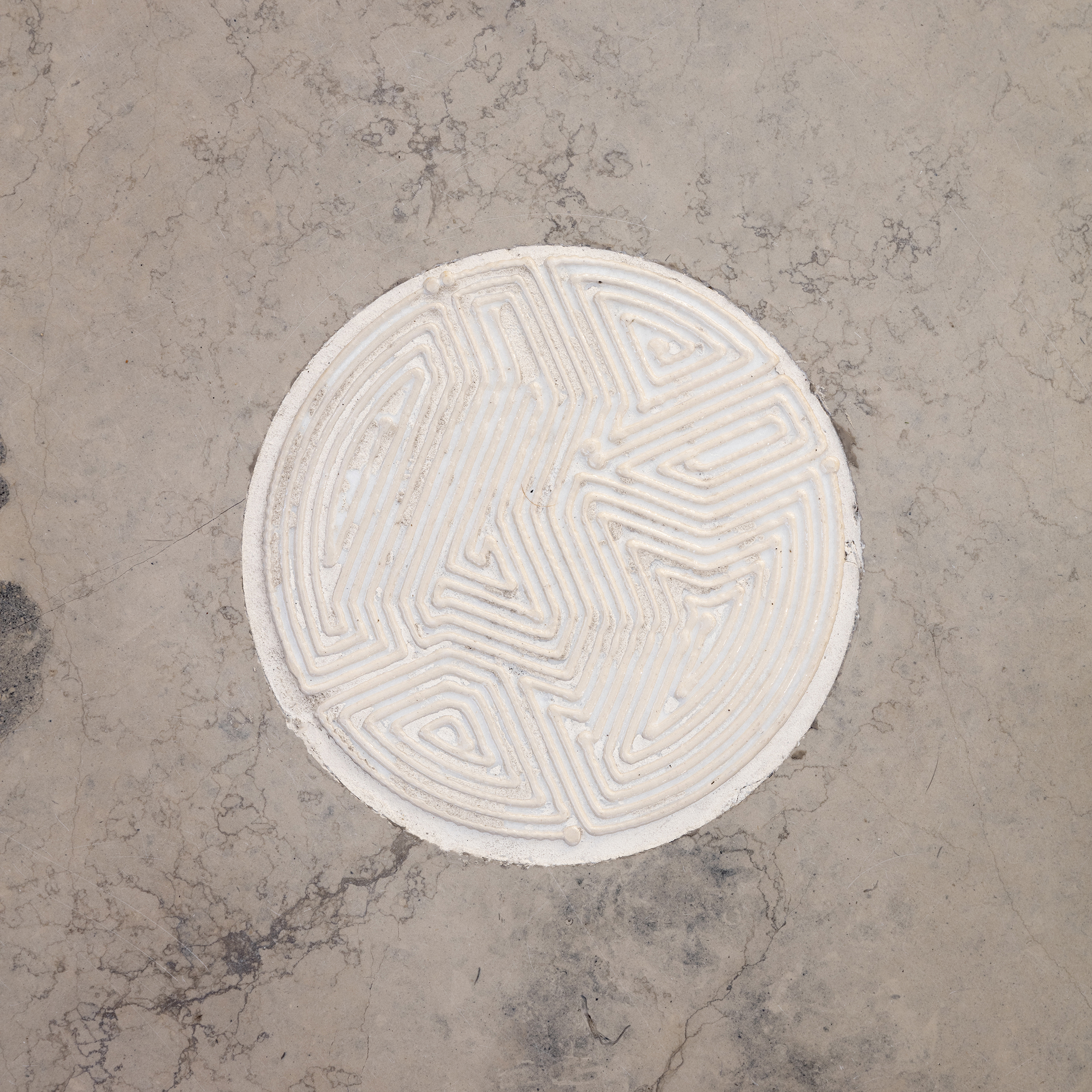

V&A tile
3D-PRINTED CERAMICS
Designed through extensive material investigations we combine craft techniques with an experimental sensibility to develop new architectural materials and finishes. We believe in the creative potential of frugal manufacturing and circular reuse techniques that introduce chance and randomness to the production line so that no two products are ever the same. In the case of the 3D-Printed V&A Tile, our unique ceramic tiles were printed with a robotic arm to ensure the pattern was continuous across more than one ceramic tile to make eight distinctive ceramic carpets that were playful crafted additions to our V&A Main Shop. These tiles are part of research in three-dimensional printed clay the origin of which lies in medieval slipware, creating a ‘piped’ rather than layered appearance.
By fitting the robotic arm with a dispenser that extrudes clay, lines of the material can be deposited one on top of the other. As this is done while the clay is still wet, the lines join together as they dry. Vessels, teapots and floor tiles were also made by the using this technique were sold in the V&A museum shop when it re-opened in May 2017.
The tiles are produced digitally, but glazed in the traditional way. Crackled glaze was chosen to further accentuate the differences in these repeated objects. Although the digital script is the same each time. It can only make something approximately the same but not identical. With a new process like this, the visual language of the outcome depends on how it is made. A layered appearance is particular to the 3D-Printing process and the V&A tile celebrates the manufacturing technology and robotic craft a play between digital and manual processes.
The 3d printed V&A Tile and Ceramic Carpet is recognised as the world’s first 3D-Printed piped tile and was exhibited at ‘FastCraft’ (8 May 2019 – 10 May 2019) in Camberwell College of Art, ’Digital Manual’ at Arram Gallery (16 May 2019 – 22 June 2019) and ‘Hand Held to Super Scale: Building with ceramics’ (19 September 2019 – 31 January 2020) at The Building Centre.
The 3D-Printed V&A Tiles come from our ability to hack and hone existing buildings and retrofit first by hot rodding architecture through applying custom shop expertise in making. This has led to new materials and products that have come out of the architecture such as the robotic crafted 3D-Piped ceramic tile and cork bench for the V&A, water-jet cut structural glass fins engineered for 21st Century Span House, Corona and the V&A Shop, or the recycled plastic secondary glazing in the super green PopUpUte. Our approach deploys latest research to weave a seamless journey of discovery between the old and the new, a process that often reveals the origin of the host. These voyages of discovery when repeated, such as the three Span Development Houses we have adapted for the 21st Century generate a specialism and expertise in rehabilitating mid-century modernist houses uniting total architecture with the arts & crafts by using robotic craft to digitally scan and pre-fabricate bespoke alterations that are frugally manufactured, ethical, sustainable and driven by an ambition to reduce whole life carbon in the building industry.
